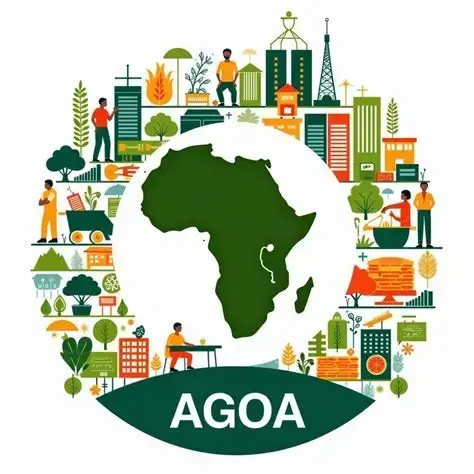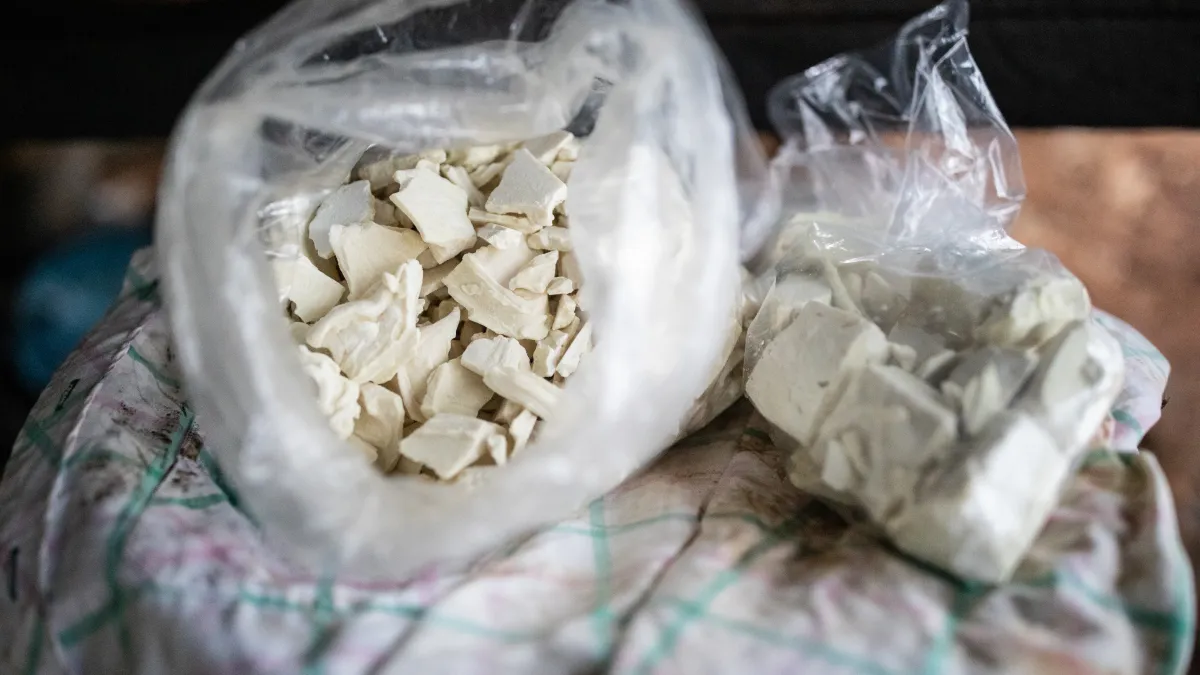By Ghana News
Copyright ghanamma

A quarter-century of preferential trade access between the United States and Africa came to an end Tuesday, with thousands of jobs across the continent now hanging in the balance as companies grapple with sudden tariff increases.
The African Growth and Opportunity Act (AGOA), which provided duty-free access to American markets for goods from 32 African countries, expired on September 30 despite months of lobbying for renewal. While discussions about extending the program continue in Washington, exporters across Africa woke up Wednesday facing a dramatically different cost structure for their products.
Pamela Coke-Hamilton, executive director of the International Trade Centre (ITC), issued a stark assessment of what the expiration means for African economies already struggling with new trade barriers and sustainability requirements from developed markets.
“If AGOA were to lapse, it will deal a blow to African countries already feeling the weight of new trade measures, from the latest tariffs to sustainability requirements,” she said in a statement released as the program expired. “Access to key markets is becoming more difficult, and African countries—especially the least developed—are feeling the strain.”
The immediate impact varies dramatically by country and sector, but some economies face devastating consequences. Lesotho, a small landlocked kingdom heavily dependent on textile exports, now sees nearly 60% of its apparel shipments—worth over $230 million annually—subject to a 15% tariff where they previously entered duty-free.
That may sound manageable compared to the initial 50% rate that some feared, but the damage has already begun. Cancelled orders, lost jobs, and reduced competitiveness against neighbors like Kenya and Eswatini, which face only 10% rates, are hitting an industry that employs 40,000 people.
“This is affecting real people, real lives,” Coke-Hamilton emphasized, pointing to the human cost behind the policy changes.
South Africa, America’s largest trading partner on the continent, faces equally severe disruption. Citrus producers representing 140,000 farm-level jobs now confront a 30% duty—the highest rate on the continent—layered on top of pre-existing tariffs. The automotive sector has already felt the pain, with passenger vehicle exports to the US dropping nearly 40% year-on-year in the second quarter of 2025, according to ITC data.
The organization projects South Africa’s overall exports to America could fall 17% by 2029 if AGOA isn’t renewed. Given the country’s position as Africa’s most industrialized economy with deep manufacturing ties to American companies, that decline would ripple across both continents.
The textile and apparel sector faces the most severe impact continentally. ITC analysis shows tariffs alone would reduce exports from AGOA countries to the US by 11% through 2029. Factor in the program’s complete expiration, and that figure jumps to 21%—a potentially catastrophic blow to one of Africa’s most important manufacturing sectors.
Other labor-intensive industries including leather goods, footwear, processed foods, and beverages also stand to lose significant ground. These sectors provide employment for millions across Africa, particularly in countries with limited economic diversification.
AGOA’s expiration comes amid broader trade tensions that have complicated Africa’s export environment. The Trump administration has imposed sweeping tariffs affecting global trade flows, creating uncertainty that extends well beyond the AGOA question. African exporters now face a dual challenge: losing preferential access while navigating an increasingly protectionist American trade policy.
The program, first enacted in 2000 and extended in 2015 for ten years, was designed to promote economic growth through trade rather than aid. At its best, AGOA created genuine commercial relationships that benefited both African exporters and American manufacturers who sourced inputs from the continent.
“AGOA is about trade, not aid,” Coke-Hamilton stressed. “It has benefitted both African exporters and US-based manufacturers. But it’s high time Africa put Africa first by strengthening regional value chains and by ensuring even the smallest of businesses have a role at the centre of this transformation.”
That perspective reflects growing sentiment among African policymakers that overreliance on preferential access to Western markets creates vulnerability. The expiration, painful as it is, could catalyze efforts to develop intra-African trade through mechanisms like the African Continental Free Trade Area (AfCFTA).
The AfCFTA, which began implementation in 2021, aims to create a single market for goods and services across 54 African countries with a combined population exceeding 1.3 billion. If successful, it would reduce dependence on any single trading partner and create regional value chains that keep more economic value within Africa.
“This is about playing the long game, and the African Continental Free Trade Area is our best tool to do so,” Coke-Hamilton said. “It can unlock regional markets, attract investment and reduce dependence on any one trading partner.”
However, implementing AfCFTA faces significant obstacles including inadequate infrastructure, non-tariff barriers, and limited intra-African payment systems. Creating alternative markets to replace American demand won’t happen quickly, leaving a painful gap for exporters who lose AGOA access immediately.
Congress could still act to renew the program, though the legislative path forward remains uncertain. Some lawmakers have expressed support for extension, but disagreements over eligibility criteria, program structure, and broader trade policy have stalled progress. The Trump administration’s general skepticism toward multilateral trade arrangements adds another complicating factor.
For businesses planning sourcing decisions, the uncertainty is almost as damaging as the tariff increases themselves. Apparel companies typically plan 12 to 18 months ahead, and many were already seeking alternative suppliers before AGOA’s expiration became official. Even if Congress renews the program in coming months, some damage may prove irreversible as supply chains shift elsewhere.
African governments face difficult choices about how to respond. Some are pursuing bilateral trade negotiations with the US, though progress has been slow and uneven. Others are focusing on regional integration and market diversification, accepting that American market access may diminish regardless of AGOA’s fate.
Kenya has been particularly aggressive in seeking a bilateral trade agreement, viewing it as insurance against AGOA’s expiration. Those negotiations continue, but reaching a comprehensive deal takes time—time that exporters losing orders don’t have.
The expiration also highlights deeper questions about Africa’s economic development strategy. Export-oriented manufacturing has lifted millions out of poverty across Asia, but the model requires stable market access and predictable trade rules. When those disappear overnight, it undermines the business case for industrial investment.
Coke-Hamilton argues the solution lies in Africa taking greater control of its economic destiny: “African countries can take this opportunity to fully commit to diversifying beyond traditional sectors and markets, processing goods before export, and strengthening trade within the continent.”
That’s sound advice for long-term development, but it doesn’t help Lesotho’s textile workers facing immediate layoffs or South African citrus farmers watching orders evaporate. The transition from preferential access dependence to regional self-sufficiency will be painful for many.
The ITC has released detailed trade briefs analyzing AGOA’s expiration impact, providing data that policymakers and businesses need to understand what comes next. Those analyses suggest the damage could extend beyond obvious sectors if renewed uncertainty dampens investment more broadly.
What remains clear is that September 30, 2025 marks a significant inflection point for US-Africa commercial relations. Whether it proves to be a temporary disruption or a permanent shift depends on decisions made in Washington and African capitals over coming months.
For thousands of workers across the continent whose livelihoods depend on American market access, the wait for those decisions will be anxious indeed.



